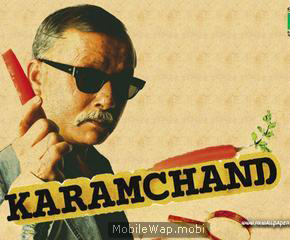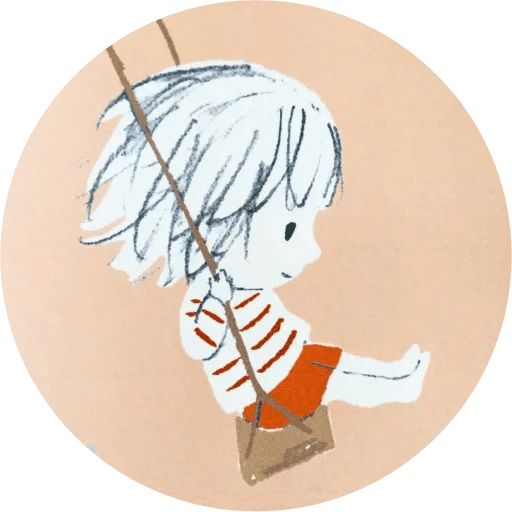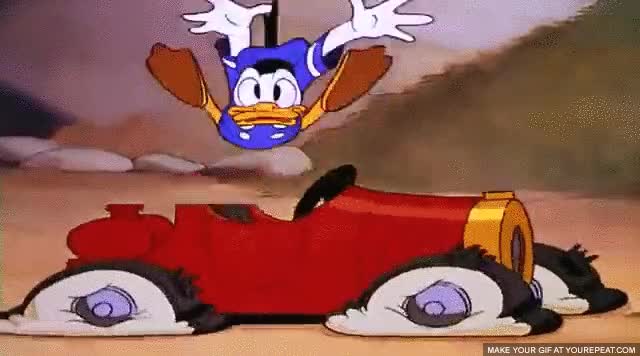
Doordarshan’s Signature Montage
Watching Television a.k.a the Idiot Box was my birthright and since that said I have been watching it day by day until it took a setback some 12 years back. As far as I recall I’d never really pretermitted much of DD in my preteen unless of course, it was really a lofty subject for me to grasp at those times. Nevertheless, there was no choice of channels like it is today and to say most of us had to stick to DD. The people living around in the next lanes would befriend those who had TV sets. I can arguably say that all that I watched on DD in those times was much much better in terms of entertainment, content, and educational value than most of the today’s TRP hungry Breaking News stuff. The only thing you had to do back then was to open the wooden shutter of your Crown or Bush TV & run up your terrace and adjust the Yagi Antenna and Ta-da… simply carefree & magical days.
Most TV programmes are nothing more than “bad-parodies” today, not dramas. They often display a high level of tension, frustration, and conflict within the family. Somehow. The norm is middle to upper middle, or high, class families that often live in plush homes in virtually interchangeable suburbs. On the other hand, it seems that Indian Television is getting over obsessed with the “Reality” show concept. Every damn T.V channel has some talent hunt show going on, be it singing, acting, dancing, fashion….practically everything one can do under the sun. In short, it’s a monumental cultural wasteland on TV — a travesty of game shows, violence, sadism, murder, bad men, good men, private detectives, cartoons etc., and endless commercials — of screaming presenters, tacky shows, cajoling and offensive. All the above somehow forces me to miss the “idiot” box that existed before the arrival of the “cable” network. Our national channel aka “Doordarshan”, was surprisingly not so ‘door’ from its viewer’s needs and sentiments in those days. Some of the best T.V shows were aired on ‘DD1′ and ‘DD metro’ in the 80s till the early 90s. Here is a brief look at some of them…and yes, keep your tissues/hankie’s ready.
“Phool Khile Hain Gulshan Gulshan” (1972-1993)

Tabassum Govil! the Hostess. Friday evenings, it was Phool Khile Hain Gulshan Gulshan time and a date with Tabassum. Every Friday at 8.30 viewers waited with bated breath to see who was the film personality that Tabassum would get to the studio. This was when film stars had only the film magazine to talk to and the host would never put them in any uncomfortable situation. The command over her language was impeccable. Tabassum used to interview the stars for hardly half an hour. Over the years, the show featured a galaxy of actors, from Amitabh Bachchan, Tanuja, Sohrab Modi to Nutan, RD Burman, Shatrughan Sinha, and many others. Remember all those shayaris from Tabassum and her lovely laugh. I guess this was the oldest and the longest running serial on Indian Television, running for 21 long years. This was long before Koffee With Karan or Rendezvous with Simi Garewal hit our TV screens. I remember it concluded with Tabassum interviewing Chunkey Pandey in the final episode. At the moment, her YouTube channel, Tabassum Talkies, keeps her busy. On the show, she narrates stories of famous film personalities, which only someone with her institutional memory can do. She knows what Google doesn’t.
Cast:- Tabassum Govil… Herself (hostess)
“Hum Log” (1984-1985)
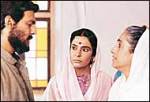
Hum Log was a very popular Hindi soap which started on Doordarshan in 1984. The Indian public loved the show and the characters became the legend and a very common topic of discussion. It was a story of an Indian middle-class family and their daily life struggles. Being the first soap-opera on Indian TV (Doordarshan), it captivated everybody (even if for the simple reason there was nothing else on TV!) The plot revolves around a lower-middle-class Indian family living in Delhi (I think): the drinking, singing father; the long-suffering, hard-working mother; their three daughters (ahh, the plight of a father with many daughters in India!) and one son; the grandparents; and the foreign-settled cousins. The eldest daughter is a feminist (“Badki”), anti-dowry; the middle wants to have fun (“majli” = middle), and the youngest (“chutki” = small one) is in school, I think. The son wants to make money and gets involved with a rich family (marrying into money). Just showed their everyday life. At the end of the show, veteran Hindi film actor Ashok Kumar used to discuss the on-going story and situations with the audience in his unique style always ending his lines with Hum Log.
Cast of Characters:
Basesar: Was the father and was an alcoholic. Played by Vinod Nagpal
Bhagwanti: The mother was a housewife and used to sleep in her kitchen itself. Played by Jayashree Arora.
Lallu: The eldest son, unemployed and looking for a job. Played by Rajesh Puri
Nanhe: The younger son. Played by Abhinav Chaturvedi
Badki: The eldest daughter, Played by Seema Bhargava
Majhli: The second daughter, Played by Divya Seth
Chutki: The youngest daughter. Played by Loveleen Mishra
Dadaji: Retired teacher and the grandfather.
Dadi: Grandmother, played by Sushma Seth
There were other characters also which I don’t remember now.
“Yeh Jo Hai Zindagi” (1984)
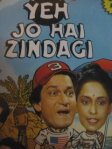
‘Yeh Jo Hai Zindagi’ was the official first ever ‘ sitcom’ of the Indian Television. It was about a couple, a brother-in-law, and the trouble they get into. Usually staid and boring Sarkari broadcaster developed a sense of humor on Friday nights. Yeh Jo Hai Zindagi, the tale of fun couple Raja and Renu forever quarreling in sweet banter became an instant laugh riot across the nation. The roads would usually be empty in most towns come at 8.30 pm. London video stores would await periodically for the copy of the serial’s tape. The box-office openings in cinemas were affected, as actor Jeetendra once complained. And Shafi Inamdar and Swaroop Sampat became your next-door neighbors, whatever your neighborhood.
Fun facts…..‘Yeh Jo Hai Zindagi’ trivia:
* Kishore Kumar sang the incredibly famous title track ‘Yeh Jo Hai, Yeh Jo Hai Zindagi’.
* Farida Jalal made her comeback in television with the serial.
* The entire serial was shot on a single camera set up.
* The line ‘30 years ka experience hai’ was actually written by Satish Shah himself.
* The first episode that was shot of the serial was actually the first episode on air as well. The serial had no pilot episodes. The Title track goes…
Ye jo hai zindagi
thodi meethi, thodi khatti
thodi teekhi, thodi feeki
phir bhi isme hans kar
jeene ka aaaa
kuchh alag hi hai mazaa
ye jo hai ye jo hai zindagi
mail milte yahan anmel
sadiyon se hai yehi khel
phir bhi isme fans kar
jeene ka aaaa
kuchh alag hi hai mazaa
koi akela koi dukela
kahin sukhdukh kahin jhamela
phir bhi isme hans kar
sang sang reh kar
jeene ka aaaaa
ik alag hi hai mazaaaa
ye jo hai ye jo hai zindagi
ye jo hai zindagi….
Singer : Kishore Kumar
Lyrics : Vinod Sharma
Director : Kundan Shah and Manjul Sinha
Main Leads : Shafi Inamdar, Swaroop Sampat, Rakesh Bedi and Satish Shah.
“Karamchand” (1985)
Pankaj Kapoor made a debut as an unforgettable carrot-chewing detective in this serial. It was a perfect blend of ‘mystery’ and ‘comedy’. Susmita Mukherjee was equally unforgettable as Karamchand’s assistant ‘Kitty’. It was probably the first detective show on Doordarshan. Whenever Susmita Mukherjee tried to help by adding her bit, she was given an instant reply “Shut up, Kitty” by her boss, the ‘gajar’ eating private detective Karamchand. Most of the dialogues became quite famous. “Shaque karna mera pesha hai.” “Kitty” “Yes Sir” “Shut Up” “Yes Sir” Funny, intelligent and well made. The chemistry between the two was amazing and show not only brought instant popularity to the leading actors but also gave the vegetable ‘gajar’ a whole new identity make-over. Also, the Title Track was nothing else but Karamchand…..Karamchand with some loony background music.
Director: Pankaj Parashar
Main Leads: Pankaj Kapur and Susmita Mukherjee
“Darpan” (1985)
TV Serial directed by Basu Chatterjee. Each episode told the story of a different person. Storys were written by Salil Chowdhury and music by Salil. The Darpan title music is just superb. During the title music, an oval mirror with a golden frame used to revolve with the background music…dodon’t really know how I remembered this but the music was so awesome that it can’t be described in the text it simply takes me back to the ’80s. Cheers to the all-time great Salil Chowdhury!
The title track goes…
Darpan zindagi ke sukh dukh ka ek aayena
kehte hai ke darpan kabhi jhooth nahin bolta
eesi tarah yeh kahaniyan bhi jhooth nahin bolti.
Directed:– Basu Chatterjee
Music:- Salil Chowdhury
“Satyajit Ray Presents” (1985-86)
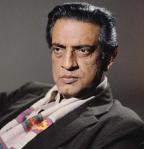
It was a 13-episode Doordarshan series ‘Satyajit Ray Presents’ Part II, directed by Sandip Ray for the National Network. Satyajit Ray’s all-time popular detective character Pradosh Chandra Mitter, better known as ‘Feluda’, would be shown for the first time in Hindi in an adventure, ‘Kissa Katmandu ka’ . Though the story (original name ‘Jata kanda Kathmandute’) starts in Kolkata, the thriller on busting of an international drug racket by Feluda has its climax in Katmandu.Doordarshan authorities, however, were indicating that if a star Bollywood actor was given the role, marketing the series would be easier for them. They considered a number of names. There was no dearth of tall, well-built actors in Hindi filmdom, but who had the sharp face and bright eyes of Feluda? With all the perfect features, Amitabh Bachchan became the automatic choice for Baba (Satyajit Ray), but he had no time for the small screen, not till Kaun Banega…
“Silence instead of words plays an important role. Satyajit Ray once said, “the crucial moment in a film must be wordless.”
Director: Sandip Ray
“Rajni” (1985)
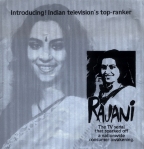
A program of a common woman’s fights against injustice, rotten system and society. Rajani had become a favorite character within every household. She dealt with social problems and faced all social issues boldly never being afraid of being a woman. When Padmini Kolhapure opted out of this teleserial (1985), Basu Chatterji persuaded Tendulkar to essay the role of a crusading housewife who fights the corrupt, inept-civic system. Many thought that Priya played a simplified version of herself as “Rajni”. The acting was straightforward, unlayered, but convincing after all it was in her blood (she was the Late Vijay Tendulkar’s Daughter).
It caught the imagination of a heterogeneous public and became a rage overnight. Karan Razdan, her husband on the small screen, became her real-life partner. Priya Tendulkar had become so wrapped up within the character of Rajani that even years later she would be mentioned as Rajani.
Title track goes:-
Ladki hai ek naam rajni hai
rajni rajni rajni
rajni ki ek yeh kahani hai
dekhi jahan burayee hai
Jake wahan takrayee hai
sacchai ki dagar pe wo to chalti hai
usse wo sabak deti hai
jiski bhi jo galti hai
rajni rajni rajni
Lead : Late Priya Tendulkar.
Director: Basu Chatterji.
Kahan Gaye Woh Log (1985)

“Kahan Gaye Woh Log” revolves around the theme of Patriotism and tells the story of men fighting for their national freedom. The plot plays out in a manner which portrays the struggles of unique individuals in their fight for their nation’s freedom. The title itself, translated into English means ‘Where did they go?’ This serial started the ‘Golden Era’ of Patriotic TV Serials. Directed by Dheeraj Kumar, the show has only one season comprising of 13 episodes in total and it showcased some of the stories of legendary freedom fighters of India. Men who stood up against the British tyranny and gave up their lives fighting for a cause greater than themselves -Freedom.
Cast:
Dheeraj Kumar Sachin Kumar Rajendra Gupta
Producer: Dheeraj Kumar
Creative Eye Production
“Nukkad“(1986-1987)
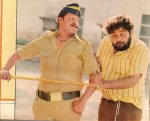
Nukkad deals with the struggles of urban youth trying to make a living in an increasingly harsh social and economic climate. They all meet at the local street corner Nukkad every evening where they share their slice of life with each other. I remember ‘Nukkad’. I recall each and every character. Guru, Radha, Khopadi, Ghanshu, Ganpat, Hari, Kadarbhai’s hotel. I vividly remember the episode when Hari is riding the bicycle continuously for days so that he could set a record and get some money and how each and every person in the Nukkad cheers and wheedles him to go on. And how finally as he is about to go for the last lap he collapses bringing down with him not only his dreams but also that of each and every person in the Nukkad. Why just the Nukkad? Dreams and hope of each and every one of us watching it. Truly a moment etched out in time.
The Title track goes…
“Badi shahar ki ek gali main basa hua hai nukkad
Nukkad se saare baashindey takdeeron se phakkad
Alag alag takdeer hai sabki, alag alag hai boli
Apney apney dhande sabke, apni apni toli
Ajab tamasha hai yeh nagri, dukh mein hanste gaate hain
Apni barbaadi ka yaaron, yeh toh jashna manate hain
Milte Hain……….
Bigadte Hain…….
Ladte hain………
Jhagadte Hain…..
Milte, Bigadte,Ladte, Jhagadte , Dil ko smbhalte hain yaaron
Chaahe kisi bhi naam se tum inko pukaaro
Yeh Saare…..Hain Phakkad!!
Badi shahar ki ek gali main basa hua hai nukkad
Nukkad se saare baashindey takdeeron se phakkad
Badi shahar ki ek gali main basa hua hai nukkad….!!
Cast:- Kishore Bhatt …. Guptaji
Suresh Chatwal …. Chotu
Dilip Dhawan …. Guru (Electrician)
Avtar Gill …. Kadar Bhai (Hotelier)
Sameer Khakhar …. Khopdi (drunkard)
Javed Khan …. Barber
Pavan Malhotra …. Hari (Cycle-repair guy)
Sangeeta Naik …. Radha
Rama Vij …. Teacherji
“He-Man” (1983-1988)
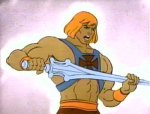
Adam is the mild-mannered Prince of Eternia. Unbeknownst to many around him, when he holds aloft his magic sword and speaks the magic words, he and his pet Cringer are transformed into Battlecat and He-Man, the most powerful man in the universe! He leads a fearless group, sworn to protect the realm and secrets of Castle Greyskull. Along with Man-at-Arms, Teela, and the Sorceress, he defends against the evil onslaught of Skeletor and his army. While Skeletor’s magic sword was formed of the same mold as He-Man’s, it is the pure heart of the wielder which makes him the more powerful, something evildoers learned every weekday for three years! The show also spun off into a cartoon called She-Ra: Princess of Power, intended to draw little girls into the realm of Eternia, but didn’t do quite so well for obvious reasons. There was a flood of toys, TV game, posters stickers based on these characters back then. I still have the glue stickers of these characters hidden away in a box somewhere in the house. Other heroes included Orko, Stratos, Mekaneck, Ram Man, Fisto, and Zodiak.
Other Villains included Beast Man, Trap Jaw, Mer Man, Evil Lynn, and Hordak.
The Title Track goes:-
He-Man… And the Master of the Universe!
I am Adam, Prince of Eternia, Defender of the Secrets of Castle Greyskull. This is Cringer, my fearless friend. Fabulous, secret powers were revealed to me the day I held aloft my magic sword and said: “By the Power of Greyskull!”
He-Man, He-Man . . . I have the power! Cringer became the mighty BattleCat and I became He-Man, the most powerful man in the Universe! Only three others share this secret . . . Our friends the Sorceress, Man-at-Arms, and Orko. Together we defend Castle Greyskull from the evil forces of Skeletor. . . . He-Man!
Produced by: Mattel/Filmation.
“Tamas” (1986)

The serial is a story of partition in India, in the year 1947, which interweaves the lives of the young innocent people caught in the Hindu- Muslim, and Sikh – Muslim tensions during partition. Based on the book written by Bhishma Sahani, it looks at how extremist elements of both communities infuse hatred in the communities, and finally how realization dawns as to the futility of violence. Tamas consisted of an out-standing performance by all the actors and especially Om-Puri as ‘Nathu’ and Bhisham Sahni as ‘Karmo’.
A writ petition was filed in the Supreme Court, asking that Doordarshan is restrained from airing the show. The grounds for challenging the airing of the serial was that the serial was likely to promote disharmony and hatred on grounds of enmity, the ill feeling among different religions and it was likely to train people to use criminal force or participate in criminal acts.
Director : Govind Nihalani
Main Leads : Om Puri, Deepa Sahi, Amrish Puri, Bhisham Sahni, A.K. Hangal, Manohar Singh, Dina Pathak and Saeed Jaffrey.
“Yatra” (1986-1987)
A Classic television series on Indian Railways Directed by Shyam Benegal. It was based on the journey of “Himsagar Express” the second longest running train in India from Jammu to Kanyakumari. The show was sponsored by the Indian Railways, and Benegal chose passengers and actors from different parts of the country, travelling from one place to another by train. The series starts at Kanyakumari and shows the train travel of different passengers as they travel north with Om Puri as the passenger and Narrator. It’s amazing how Mr. Benegal could manage live shooting in a crowded train and through various stations. I do not think anyone apart from Mr. Benegal could achieve this task. Most of the TV actors from 80’s Doordarshan can be seen as passengers of the train.
Director: Shyam Benegal
Script: Shyama Zaidi
Music: Vanraj Bhatia
Cast: Om Puri, Ila Arun, Mohan Gokhale, K K Raina, Madhav Vatve, Atmaram Bhende, Lalita Kenkre, Nina Gupta, Sushma Prakash, Rajendra Gupta, Harish Patel, Nikhil Bhagat Officers & Staff of Indian Railways
“Didi’s comedy show” (1975-1980)
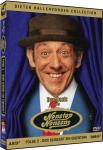
I was fiddling with the TV remote yesterday, I came across that famous “Didi’s Comedy show” aired between 5pm to 6pm Monday to Friday on Jetix. The same show was telecast by “TRANSTEL” on Sundays back in the ’80s. Didi’s comedy show by Dieter hallervorden is actually a German-based comedy which is translated to English in the name of “Non-stop Nonsense” The slapstick show is based on Didi’s comedic antics, a bumbling detective struck by sparkling ideas which turn out disastrous, rolling in a hilarious situation for the audience. At the end of each episode Didi would come on stage and thank the applauding audience and there would be a final funny sequence before signing off. Didi didn’t speak any language in many parts of the show and it was easy to see the universal language of humor.
Director: Heinz Liesendahl
Writers: Brad Ashton (writer), Ralf Gregan (writer)
“Jamie and the Magic Torch“(1976-87)
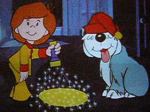
Night-time in a quiet, suburban street. In one of the houses, it’s bedtime.”Sleep well, Jamie”, his mum calls, and our hero drifts off to sleep. Well, not quite. You see, Jamie had a magic torch – and in each episode of this classic series, Jamie and his dog Wordsworth enjoyed amazing adventures – and no-one even noticed they were gone! Wordsworth was the guardian of the torch and he appeared from under Jamie’s bed during the title sequence of each episode. By shining the torch on his bedroom floor Jamie opened up a link with a very strange new world. Through a hole in the floor Jamie and Wordsworth slid down and at the other end, they would arrive in Cuckoo Land – popping out from the bottom of a tree onto a conveniently-placed trampoline. Cuckoo Land is a place inhabited by strange people such as Mr. Boo, an elderly gentleman who flew around in a “submachine”, Strumpers Plunkett, and Officer Gotcha, a unicycling policeman!
Here are the lyrics to that oh-so-familiar song:
Jamie! Jamie!
Jamie and the Magic Torch.
Down the helter-skelter, faster and faster
towardsCuckoo Land.
Wordsworth! Wordsworth!
Following hard behind.
Ready for adventure, always there to lend a paw
…or hand!
Mr. Boo and all the others too,
the strangest people you’ve ever seen.
And the torch with its magical beam –
If I hadn’t really been there
I’d think that I was dreaming!
Jamie! Jamie!
No two nights are the same.
And life is one long glorious game
with Jamie.
Jamie and the Magic Torch!
[Yeah! Switch On!]
Written and Narrated by BRIAN TRUEMAN
Music by JOE GRIFFITHS
Producers: BRIAN COSGROVE MARK HALL
Cosgrove/Hall Productions Ltd.
“Malgudi Days” (1987)
THE GREATEST SERIAL ON INDIAN TELEVISION EEVER.This is and will always remain my most favorite serial on Doordarshan. Malgudi Days was basically a collection of short stories based on the people of a fictitious place. Malgudi is a town “habited by timeless characters who could be living anywhere in the world” and is located on the banks of river Sarayu and surrounded by the Mempi Hills. Vendor Of Sweets narrated the story of a sweet vendor, Jagan enacted (rather lived) by Anant Nag, his business, and confrontation with his son who had returned from abroad along with his gori wife. It so happens that the wife is more down to earth and does not crib about the circumstances she has to go through compared to his own son. Her Goodnight “Pitaji” in broken Hindi was just superb. . Swami and Friends revolve around ten-year-old Swaminathan, or Swami as he is addressed by other characters. Swami portrays the growing pangs of a boy who despises school, as he makes excuses and roams around Malgudi with his friends. Swami’s father works in a government office and his mother is a housewife. At home, Swami shares his adventures with his aged granny, who lovingly addresses him as “Chamy.” Swami also has two close friends: Mani and the son of the Police Chief Superintendent, Rajam. Swami’s character was enacted By Manjunath, a regular feature in many of Shankar Nag directed movies. There was an episode in which a young girl is promised a role in a film , she is all dressed up in a new frock as she has to give a screen test before the crew in the evening, after which her father promises to take her for a film or something…she just vanishes from the house as all the neighborhood is searching for her frantically, she is quite asleep in a bamboo container. In another episode Devan Bhojani (Kareema of Dekh Bhai Dekh) has to shave off his hair completely as per some mannat that his mother had prayed for his good health and was fulfilled..this leads them to their native place on top of some hillock. The son is against this rasam as he is a grown-up boy and thinks that his parents are backward, and also that all his friends in college would tease him if he’s shaved, at the end the kid just flees the spot leaving his parents behind. In one episode “The Engine”, Anant Nag wins the first price in some Mela in Malgudi and to his surprise, he wins a Roadroller which becomes a big curse for him as he has no place to keep it, no one knows how to ride it either. The priest hands him the temples elephant and 50 workers to pull the engine from the site or the owner would be jailed for parking in public property also it goes on to crash on the walls of his neighbor finally he dumps it in a gutter. In another episode -“The horse & the two goats” an old man and his wife are surviving on daily wages & their life is very tough, the old man grazes his Lambs and in the afternoon heat lays down below a statue of a horse, to his surprise there is a foreigner who is interested in buying the horse as he thinks it to be an ancient work of art and assumes the poor man to be its owner. A conversation follows amongst the two in which no one apart from the viewers understands what each one want’s to say. The poor chap thinks that the foreigner is interested in his lambs and offers him 100 rs for both of them, as the old man is in dire need of money agrees to sell them, later that evening the two lambs return back & he is puzzled as to why did the foreigner leave them or did they run away. The most memorable were the sketches of the serial which were done by R.K Narayan’s brother and acclaimed cartoonist, R.K. Laxman. Thirty-nine episodes of “Malgudi Days” were telecast on Doordarshan. It is one of the greatest works by a great writer R.K. Narayan. Every story is just itched in my mind so much so that i can remember all the episodes yet today. And who can forget the lyrics of the title song…“Tana na na tana naanaa aa tana naanaa naaa. I still feel like screaming Swamiiiiiiiiiiiiiiiiiiiiiiii.
Director: Shankar Nag
Music: L Vaidyanathan
Illustrations by: Pune’s own R.K. Laxman
Produced by: Padmarag Films
Main Leads Master Manjunath(As Swami), Anant Nag, Girish Karnad, Devan Bhojani etc.
“Spiderman” (1986)

Children’s favorite classic original from 1967 USA. Directed by Don Jurwich). It was just 15 minutes. I had to wait the whole week, forego by afternoon sleep to watch this cartoon which had Spiderman hanging on spider web for most of the 15 minutes. It was really fascinating at that time where the web crawler would fight the enemies, hang on the web and catch thieves and goons in the web. We used to catch spiders from all the nicks & corners in our house in an attempt to gut ourselves stung and eventually become a Spiderman ourselves ( yes I was that silly to do that).
And of course there was its theme song. I and my brother used to bend our wrists in a position to eject the web and sing these following lines…
Spiderman, Spiderman,
Does whatever a spider can
Spins a web, any size,
Catches thieves just like flies
Look Out!
Here comes the Spiderman.
Is he strong? Listen bud,
He’s got radioactive blood.
Can he swing from a thread
Take a look overhead
Hey, there
There goes the Spiderman.
In the chill of night
At the scene of a crime
Like a streak of light
He arrives just in time.
Spiderman, Spiderman
Friendly neighborhood Spiderman
Wealth and fame
He’s ignored
Action is his reward.
To him, life is a great big bang up
Whenever there’s a hang up
You’ll find the Spider man.
“Chimanrao Gundyabhau“(1986)
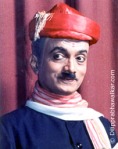
The best of Dilip Prabhavalkar. His debut on Indian Television portrayed in a television serial more than a decade ago. His makeup as in a typical Tilak like a costume with a Puneri pagdi and a Hitler’s mustache, On other times as a brahmin with a shendi. Chimanrao called his wife A Kau, A Cheu I also remember him calling the small girl as “Chimney”. Based on the lovable C. V. Joshi character with the quivering nose and high-pitched voice that Dilip Prabhavalkar portrayed.
The role turned him into a celebrity, a household name. The Chimanrao of ‘Hasvaphasvi’ is Prabhavalkar’s tribute to a much-loved role, and an attempt to offer a bit of nostalgia to the audience. There was also a movie with the same title in the year 1979. Again a debut for Prabhavalkar in the Indian Cinema.
Cast : Dilip Prabhavalkar, Bal Karve
Producer: Smt.Vijaya Joglekar-Dhumale
“Kachchi Dhoop” (1987)
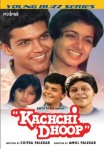
‘Kachchi Dhoop’ is the unforgettable television series written by Chitra Palekar and directed by Amol Palekar. This children’s classic endeared itself to viewers with its fresh approach to timeless themes of love and sacrifice. The joys of growing up, discovering new friends, adolescence and first love. The facets of life are wonderfully brought out on screen. Marking the debut of Bhagyashree and Ashutosh Gowarikar, the story of a single mother, her three daughters, their friends, and neighbors touched the nation’s heart. Kachchi Dhoop can be roughly translated as “Unripe Sunlight” – a beautiful metaphor for young and impressionable minds. Yes, it was a feel-good serial! Kachchi Dhoop featured Alka (Bhagyashree), Nandu (Shyamalee Palekar) and Meenu (Purnima Patwardhan) and Shanky (Prashant Bhat), his grandfather Admiral… (Amol Palekar) and Shanky’s tuition teacher Nikhil (Ashutosh Gowarikar). It was basically an adaptation of “Little Women”, but was well suited to Indian conditions. Fights, disagreements, friendships, sacrifice, jealousy, first love are some of the emotions that they face and emerge stronger to face life. It was a very nice serial with excellent directorial inputs. The serial marked the debut of Bhagyashree. The serial was clean, good fun, designed especially for young minds. It showcased the directorial talent of Amol Palekar, that was later strengthened through works like “Kairee”.
Kachchi Dhoop, gunguni dhoop
asli aur chulbuli dhoop (2)
kachchi Dhoop, gunguni dhoop
zindagi ke aangan mein
umra ki dahleez par
aa khadi hoti hai ek bar ek bar ek bar
Cast:- Amol Palekar, Ashutosh Gowarikar, Bhagyashree, Purnima Patwardhan, Shalmalee Palekar, Prashant Bhatt, Bharati Achrekar.
Story, Screenplay & Dialogues: Chitra Palekar
Singer: Anuradha Paudwal
Director:- Amol Palekar
Produced by: Dnya Films
“Ank Ajube“(1987)
Ank Ajube or MATHEMAGIC as it was called was the first serial for kids entirely on maths, which was the most feared subject for most of the kids. UTV has been a pioneer and a prolific creator of content for kids segment. Right from ‘Mathemagic’ in 1987 for Doordarshan to ‘Snakes & Ladders’ for Zee in 1992, through ‘Junglee Toofan Tyre Puncture’. Ank Ajube was telecast way before Zee came with Bournvita Quiz Contest with quizmaster Derik O’brian which was again an instant hit among us. MATHEMAGIC was hosted by Benjamin Gilani & Nina Kulkarni. A very interactive discussion with the kids with superb hosting by the two talented artists. There was also humor created by introducing a third umpire ie: an early computer referred to as SHUNYA (0) who verified if the answers were correct or not. SHUNYA was a big setup with a lot of LED’s (many yellow colored making up a Zero) flashing all over and SHUNYA spoke in a robotic voice which we always tried to imitate.
Hosts:– Benjamin Gilani, Nina Kulkarni
Produced by: UTV
“Ramayan” (1987)

A mythological masterpiece by Ramanand Sagar released on 2th Jan 1987. Ramayan had the entire nation glued to it on Sunday mornings when it was aired. Arun Govil who played Ram was revered by fans who fell at his feet, whenever he was seen in public. Deepika Chikilia, who played Sita, tried to cash in on her popularity by contesting elections.
It was like a magnet emptying the streets, there was so much bhakti bhaav that people used to apply tilak and garlands to their television sets. As they say, this can happen only in India.
Music Director: Ravindra Jain
Director: Ramanand Sagar
Starring: Arun Govil, Deepika Chikhalia, Sunil Lahri, Sanjay Jog, Bal Dhuri, Arvind Trivedi, Dara Singh, Vijay Arora, Sameer Rajda, Mulraj Rajda and Lalita Pawar
“The World This Week” (1987)

The famous voice of Prannoy Roy would say “GOOD EVENING AND WELCOME TO THE WORLD THIS WEEK”
Pranoy Roy debuts on national television. The tabla theme music every Friday night was first heard in this half-hour news capsule and news was never the same again. The NDTV logo gave a totally new meaning to the word “NEWS”. This was long before NDTV associated with Star News channel. This was long before the news became a 24 hours affair. This was the time when news was everything the government wanted us to see and not what was actually happening. NDTV’s current affair programs were the best analysis we could get.
The same expertise was seen during the Election and budget coverage. NDTV chairman Prannoy Roy is remembered by many, to this day, for his closing lines “That was the world this week, see you again next week”.
A GR8 effort by NDTV (remember how the logo would have a streak of light running through the letters…)
Cast:
Appan Menon …. Himself (anchor)
Prannoy Roy …. Himself (host)
“Bharat Ek Khoj“(1988)
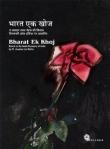
Bharat Ek Khoj (a.k.a. “Discovery of India”) The Discovery of India was written by India’s first Prime Minister Jawaharlal Nehru during his imprisonment in 1942-1946 at Ahmednagar in the Ahmadnagar Fort. It is a 53 episode serial based on Jawaharlal Nehru’s book showing the 5000-year-old history of India until its Independence in 1947. Hosted by Nehru’s close resemblee Roshan Seth and Directed by ace director Shyam Benegal.
The Theme was set by the one and only classical genius Ravi Shankar.
The Theme Goes:-
This first stanza is in Sanskrit (Rig Veda, Book 10, Hymn 129)
Srishtee se pehle sat nahin thaa, asat bhi nahin Antariksh bhi nahin, akash bhin nahin thaa chhipaa thaa kyaa kahaan, kisne dhakaa thaa us pal to agam, atal jal bhi kahaan thaa
Srishtee kaa kaun hai kartaa
Kartaa hai vaa akartaa
Oonche aakash mein rahtaa
Sada adhyaksh banaa rahtaa
Wahin sachmuch mein jaantaa..Yaa nahin bhi jaanataa Hai kisi ko nahin pataa, nahin pataa, Nahin hai pataa, nahin hai pataa
Weh tha hiranyagarbh srishti se pehle vidyamaan Wahi to saare bhoot jaat ka swami mahaan jo hai astitvamaana dharti aasmaan dhaaran kar Aise kis devta ki upasana karein hum avi dekar
Jis ke bal par tejomay hai ambar
Prithvi hari bhari sthapit sthir
Swarg aur sooraj bhi sthir Aise kis devta ki upasana karein hum avi dekar
Garbh mein apne agni dhaaran kar paida kar
Vyapa tha jal idhar udhar neeche upar
Jagaa chuke vo ka ekameva pran bankar
Aise kis devta ki upasana karein hum avi dekar
Om !! Srishti nirmata swarg rachiyata purvaj raksha kar Satya dharma palak atul jal niyamak raksha kar Phaili hain dishayen bahu jaisi uski sab mein sab par Aise hi devta ki upasana kare hum avi dekarAise hi devta ki upasana kare hum avi dekar
Cast and Crew for “Bharat Ek Khoj”
Directed by:– Shyam Benegal
Writer:– Jawaharlal Nehru
Film Editing by– Sanjay Leela Bhansali
Cast: -Tom Alter, Sadashiv Amrapurkar, Salim Ghouse …. Krishna, Neena Gupta, Ashok Kumar, Om Puri, Roshan Seth …. Jawaharlal Nehru, Chandrakant Thakkar …. Lawyer
“Mr. Yogi” (1988)
The Late Mohan Gokhale plays Mr. Yogi who comes to India in search of a suitable bride as per the principles of astrology leads to tragic-comic results. Om Puri plays Sutradhar who directs the story of Mr.Yogi. The story revolves around Yogi and his search for a perfect bride. The one episode that sticks out for me is when he meets Radha Seth who is taller than him and tells him she will cut off her legs to marry him! The ending episode had Yogi marrying Om Puri’s daughter. 13 episodes and 13 girls. It was simply Hilarious and the decent acting by Mr. Gokhale was heartfelt. The finale of this sitcom still stands out to be the best I’ve seen on Tv. The title ran something like Mr.Yogi o!ho, Mr. Yogi…
Cast :
Mohan Gokhale… Yogesh Ishwarlal Patel aka Y.I. Patel aka Mr. Yogi
Om Puri …. Sutradhar (Narrator)
Directed by: Ketan Mehta
“Indradhanush” (1988)

None other serial made us crave for a Personal Computer than Anand Mahendra’s Indradhanush that was aired on Sunday mornings.
A computer that would connect you to the intergalactic world.This mixture of sci-fiction and fantasy that revolved around a group of kids, who assemble a computer whose monitor has eyes that turns as the host to an alien prince from a planet in the Andromeda Galaxy on the run from his enemies, which gives birth to a lot of twists and weird situations.
Appu, Bala, and Srikanth were our ‘reel-life’ childhood heroes, who more or less reflected our curious and inventive childhood brains. The serial also had a bunch of talent featuring fine actors like Vikram Gokhale, Girish Karnad, Deepa Lagoo and also Urmila Matondkar.
“Ek Shunya Shunya-100” (1988)
One of the few ‘crime-based classics’ that too in Marathi was “Ek Shunya Shunya”. In spite of being a Marathi serial it had immense viewership which could be compared with that of Ramayana (1987). It was electrifying, right from the haunting stock-music that none of us will ever forget, to the performances of the terrific trio of Shivaji Satam, Deepak Shirke, and Ajay Phansekar.
B.P. Singh started this project as director & Shivaji Satam was the detective inspector. Even today, people remember Satam by this serial.
Cast: Shivaji Satam, Deepak Shirke, Ajay Phansekar
Director: B.P Singh
“Gotya” (1988)
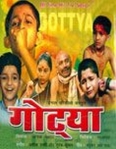
This beautiful Marathi serial pictured somewhere in the Konkan area had the child actor Joy Ghanekar playing the role of GOTYA. The story was by Vasant Sabnis. The title song was sung by Arun Ingle and its fine music was by the evergreen Ashok Patki. He was the “perfect” child every parent wanted. Here was a kid who was the personification of good behavior and virtue. The brother-sister pair was just awesome.
Many kids at that time would look up to Gotya & a few secretly hating him too. The old lady in the serial would always be in a red saree with her head covered. She would always curse Gotya by pulling his ears. He would then cry in a very heartfelt coarse voice but his sister would always be there to quieten him.
Title Track:
Beej ankure ankure, olya matichya kushit,
jase rujave biyane maalrani khadkat (2)
Beeja Havi Neetrani, havi mayachi bhakar,
Lakkha praksh nirmal, tyat kashtacha pazar
Havi Andharlya rati, chandra kirnanchi saath,
jase rujave biyane maalrani khadkat
Beej ankure ankure, olya matichya kushit,
jase rujave biyane maalrani khadkat.
Cast: Savita Malpekar, Suhas Bhalekar, Suman Dharamadhikari & Joy Ghanekar.
Director: Rajdutt.
Writer: N.D Thamankar
“Vikram Beetal” (1988)
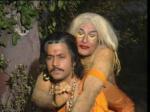
Vikram Vikram Vikram Vikram…betaal taal taal taal, Veeekraaam aur betaaaaaal…Viiikraaam aur beeeeytaaaal…
Every episode started with King Vikram {Arun Govil } getting to the Simsapa tree in the middle of the cemetery with his sword drawn. First, he would jump up and down trying to reach the corpse. He would then, dressed very happily in orange, climb up the tree to get to the corpse. This he did by doing some tacky acrobatics, which essentially involved hooking his ankles together and swinging towards the corpse. He would do this for a while and would finally manage to cut the corpse possessed by the Veetal [Sajjan ] down. On hitting the ground the corpse would invariably, howl in pain and Arun Govil with his Ramayana hangover would at once become immensely concerned about the Vetaalas well being. He would rush to the vetaala and then the vetaala would laugh a hysterical laugh and the corpse would move by its own volition along the ground with Vikram chasing it in vain. Then the vetaala would fly back up the tree laughing all the while. King Vikram would steel his being and set out once again to cut the corpse down. This time he would do it with immaculate timing, outwitting the vetaal, without blinking a single wooden eyelid. He would then swing the corpse over his shoulder and set out. The corpse/betaal more or less rode piggyback on Arun Govil, like one of those popular and excruciatingly painful ordeals one has to go through when dealing with 4 yr old kids. The Vetaala itself was very funny to look at with a voice like old timer villain Jeevans’. It had a powder caked face, a flowing white wig and horrendously lip-sticky lips that opened wide in a leering grin, which in turn revealed an absence of teeth. [Background score repeat!] Vikram Vikram Vikram Vikram…Vetaal Vetaal Vetaal Vetaal, Veeekraaam aur Vetaaaaaal…V aur V… The deal was that Arun Govil/Vikram was not supposed to say a word till he got the Betaal outside the Smashan ghat. Now Vetaal would say, “Raasta kathin hai, Chalo rajan, main tumhein ek kahaani sunaata hoon”. He would then weave a tale about some Jataka-tales-era characters which would finally end in a moral dilemma. The best part about these tales was that they were always populated by the same set of junior artistes in different outrageous hair do’s. Then Vetaal would say,” Batao Rajan, ab is samasyaa ka kya hal hua? Agar aap jaante hue bhi, nahi bataayenge, toh main aapke sar ke hazaaaaron tukde kar doonga.
” Wonderful! And Vikram, he would be forced to solve the problem like a moral, god-fearing Deep Blue computer. In a jiffy. And in a jiffy, again, Vetaal would rise up and away back to his Tree Joint saying in sepulchral tones, ” Ha Ha Ha…ab tu bolaa, aur main chala…ha ha ha” And he would fly using the same technology they used to make Hanuman fly in Ramayan. And Vikram would run chasing him again…until the next episode which would again begin with Vikram with his sword drawn running through snake infested jungle & discovering betaal hung upside down on the same tree branch.
Cast: Arun Govil as Vikram, Sajjan As Betaal
Title song: Charanjeet Singh Babloo
Directed by: Ramanand Sagar (Who else could?)
“Mujrim Haazir” (1988)
This 26 episode serial was telecast on DD sometime in 1988-89, on Wednesday nights. A highly successful serial based on Bimal Mitra ’s classic novel ASAAMI HAAZIR (Bangla novel), it had the story of a Zamindar’s son rebelling against his father. Nutan played an old widow (“Kali Ganj Ki Bahu”). In this Rakesh Chowdhary’s treatise on feudal failings, Mujrim Haazir, Nutan showed how effectively television could be used to convey emotions too large for a 27-inch screen. For the first time, the audiences saw doyen of Indian cinema like Nutan and Utpal Dutt on television. Set in the early 20th century Bengal, Mujrim Haazir is the story of Sadanand Chowdhary a sole heir of a feudal lord who rebels against the entire system of exploitation. Sadanand is determined to put an end to his own family, which is responsible for untold exploitation. It is the tragic story of beautiful and innocent Nayantara the only daughter of a schoolmaster who is married to Sadanand. Though Sadanand and Nayantara love and understand each other both are compelled by fate to live apart. Their beliefs and vows conflict with each other and with themselves. It is also the tragic tale of Kaliganj Ki Bahu a Widow of another landlord who was cheated of her land and wealth by Sadanand’s Grandfather. Nutan, one of the finest actresses that Indian cinema has seen in the last few decades gave a memorable performance in the serial. Her very presence generated an intensity and dimension to the already complex set of characters. One more thing that is fresh in my mind is the small kid Nutan used to meet and the humming of palkhiwalas who used to carry Nutan. This hum is an adaption of Hemanta Mukherjee’s ‘Palkir Gaan’.
Hun Hu na Hun Hu na Hun Hu na Re Hun Hu Na…
Producer, Director:-Rakesh Chowdhary
Music: Sapan Jagmohan
Cast: Nutan, Utpal Dutt, Reeta Bhaduri, Rajiv Verma, Ajit Vachhani, Mohan Bhandari, Virendra
Singh, Navni Parihar, Anjan Shrivastav, Shashi Puri, Mangal Dhillon, and others.
“Wagle Ki Duniya” (1988)
‘Wagle Ki Duniya’ was based on characters created by famous cartoonist R. K. Laxman-The Common Man. It was a marvelous entertainer, which, in some ways, embodied TV’s ubiquitous appeal over the language barrier. The concept was simple and clean, which only focused on the world of the quintessential common man ‘Wagle’. Each episode is a separate story about this middle-class family and their day to day, almost mundane, yet exciting life. Anxieties, anticipation, apprehensions, appreciations, appalling incidents, … all form a part of their small and simple world. There was this one episode from the serial, which I somehow always remember during the Diwali Festival. In that, Wagle goes shopping for new fabric that was to use for the new curtains for their small house for Diwali. He forgets how many meters he was required to purchase, by his wife. And he lands up buying much much more than needed. Now to use the extra fabric, the family decides to use it by making shirts and other household items, out of it. So on Diwali eve, we see the whole family in the same clothes, with same curtains, dining mats, and bed sheets….it was simply hilarious. Anjan Srivastav is still referred to as Wagle for his heart-touching character in this serial.
Main Leads: Bharati Achrekar and Anjaan Srivastav, Mr. Bhalla and their two kids Manoj & Raju
Director: Kundan Shah/ Ravi Ojha
Music: Vanraj Bhatia
Producer: Durga Khote Productions/ Orange Media Presentation
“Kakaji Kahin“(1988)
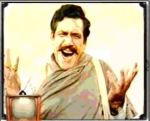
“Kakaji Kahin” simply meaning “Kakaji say’s”. It was one really original and funny serial, Kakkaji Kahin and his political boss, a desi “Ji haan adhyaksh-ji”. Some of the episodes were really funny- like releasing the minister’s fake horoscope or ‘kundli’ into ‘the market’ before the general elections so that the opposing team gets demoralized. There was also a ‘Kampootar baba’ an early IT guy, who makes the aforesaid computer horoscopes. I remember Om Puri’s red-stained lips and a hearty laugh with a mouth full of paan! “Phunwaa ghumayo ha ha ha ha…
Cast:– Shail Chaturvedi and Om Puri
Written by: Manohar Shyam Joshi
Director:– Basu Chatterjee
Param Vir Chakra (1988)

This serial portraying the real life of various Param Veer Chakra gallantry award winners, India’s highest military honor.
Every episode would move us to tears as you find out about the sacrifices made by our brave soldiers
Directed By: Chetan and Ketan Anand
Starring: Puneet Issar, Kanwaljit Singh. Farooq Shaikh, Naseeruddin Shah, Annu Kapoor
“Mulla Naseeruddin” (1988)

Mulla (Khoja) Naseeruddin enacted by young Raghuveer Yadav & old Zohra Saigal as the Narrator of stories, about a witty mulla…set in the 13th century…who lived in Baghdad. I remember Raghubir Yadav walking in the desert with his mule & reaching a village where Zohra Sehgal is narrating some stories. In one of the episodes, the King gives an elephant to his Riyadh (janta) so that they can feed it & look after it. This was as a punishment for not paying the Lagaan levied on them. Now the old Zohra sehgal is fed up as it is getting difficult to feed the big animal. She cooks big loaves of rotis for the elephant but can’t satisfy his hunger. Finally, she hears about a wise man- Khoja Nasruddin in town. She narrates her story. The witful mulla then sells off the elephant to the neighboring rival king & gives the money to Zohra. Next day Zohra Sehgal’s Bhais dies & at the same time the king himself comes to see the dead body of the elephant. Khoja Nasruddin explains to the king that the elephant was a wise old man & his shrine should be created & takes him to the place where the Bhais is buried with its horns sticking out. He explains to the king that the Elephant had died because of this rare disease of horns & the King bursts into tears on the grave. Remember how he would witfully fool the King with his funny laughter at the end of each episode and then wink his eye to the viewers. The titles would scroll in a typical Green color.
The title and ending music were so good by Louis Banks (the Jazz maestro)…I’m dying to hear that track once more!!
Cast: Raghuveer Yadav, Zohra Sehgal, Saurabh Shukla
Music: Louis Banks
Directed : Aman Allana
Produced by: Times Television Network
“Ulta Pulta“(1988)

A five-minute show “Ulta Pulta” on DD brought about a new wave of sensible comedy which used humor to convey messages on issues like corruption, red-tapism and adulteration and other such issues of common man. It was Jaspal Bhatti directing..or rather misdirecting this one. It would start with a comic emoticon switching its head 180 degrees with a background of “Ulta Pulta, Ulta, Pulta”. The five minutes spent were worth as the DD viewers had never seen satire presented in this manner before. It paved the way to the more popular “Flop Show”.
Title Track:
Ah Ah Ah Ah Ultaaaaa, Ah Ah Ah Ah Pultaaaaa
Ulta Pulta, Ulta Pulta (2)
Ulta Haiiiiiiii, Pulta Haiiiii (in a bleating voice) (2)
“Flop Show“(1989)
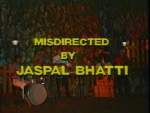
Jaspal Bhatti was just too good. Hilarious comedy.. He pulled up on anyone and anything. Corruption, politician everything. His real wife played reel wife too. Had his own set of actors. A complete mockery of many things and that too on the government-owned channel.
In one scene:-
The Hero A guy climbs the telephone pole, hooks his telephone fraudulently and calls his cousin’s home in London
– “Aunty Ji, Vijay Hain Ghar pe”
– “Nahin Beta, Abi 30 minute pe Ajayega”
– ” Teek hein Aunty, My HOLD karta hoon”
In one of the episodes a girl is in love with some other guy but girl’s father insists on girl marrying a telephone lineman. The lineman one day sends her some fruits and guess what the fruit was? It was sugarcane! I remember I had laughed hard while all my family members were wondering what was so funny about it. Although most of JB’s shows from the 80s and early 90s are silly in retrospect, this one stands out as one of a kind. Each episode was prefaced by a dedication to the group of people that particular episode was going to make fun of. Each dedication was followed by the theme…
Flop Show theme song:-
“Bhow bhow (drum roll) bhow bhow bhow!
Fuh-fuh-fuh, fuh fuh fuh, fuh fuh fuh, FLOP!
Zoom in zoom out! Zoom in zoom out, fade in fade out, hua-ah
ah ah! hua-ah ah ah!
Camera fell down flop show, flop show!
Writer, fighter! Writer fighter, producer director, singer actor
hua-ah ah ah!hua-ah ah ah!
Cameraman! Everymaaaan!
FLOP!
Flop show, flop show! Flop show!”
Series Credited cast:-
Comedy Cast: Jaspal Bhatti, Vivek Shouq, Savita Bhatti,
Produced & Mis-Directed: Jaspal Bhatti.
“Duck Tales” (1989)
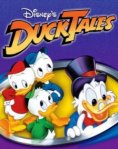
Sunday mornings 10.30 am it was the time for Disney Hour. Duck Tales was made in 1987 by Walt Disney. An English cartoon which DD showed in the dubbed version in Hindi with very good voices for all the characters. It was the time when we were always hooked up with mysterious Adventures and suspense stories with a ting of horror as well as comedy. Duck Tales provided just that and so it was a favorite amongst us. It was followed by Talespin, another good cartoon. The dubbing of the four junior ducks was exceptional. There were interesting episodes of some idiotic crooks called Beegle Boys and their fat mother who would always plan a plot to steal Uncle Scrooch’s money. The junior ducks would always fail their plot and save their uncle’s money. There was another old duck who always envied scrooche’s wealth. There was a scientist called Jairo who would invent some new gadgets and the junior ducks would be the first ones to test them. Then there was Mrs. Beekely a fat lady who would look after the kids. There was a Pilot called Launchpad who could never land his plane without a crash. He called his master ie: Mr. McDuck as Mr. Mc Dee. He would be the last one to help the kids out from in their expeditions and fly them away home. The Kids were named Hui, Lui, and Dui. They all had a typical voice which is difficult to imitate but we tried it. They had a kid sister Webby who had a very cute voice.
The title song in Hindi goes:-
Zindagi toofani hai jaha hai duck world
Gaadiyan, Lasers, Hawaijahaaz Yeh hai Duck world
Rahasya suljahao, Etihas banoo…duck tales Uooo
Hardin harpal bante hai yeh ducktales
Khale khatron se harpal yeh hai duck tales
Kha- kha-kha- khatra bachna deewano
jab azbee lage piche tumahare
Aise main bas dekho jhatpat ducktales
Hardin harpal bante hai yeh ducktales
Khale khatro se harpal yeh hai ducktales Uooo
Bony kai sang, Moni kai bas ducktales Uooooooo
“Space City Sigma” (1989)
Sunday mornings 11:00 am was time for the indie version of Star Trek- The Next Generation and also Doordarshan’s first attempt in making an Sc-Fi entertainer. This was something unprecedented for our young minds with Alien intervention, Strange creatures, and Laser Guns. If you had followed Star Trek this would definitely appear as a scaled down, low budget attempt but nevertheless exciting for the Indian audience. I faintly remember about a futuristic city in space called Sigma which is the last surviving resort for the human race against the extraterrestrial beings led by ZhakhaKoo.
Now this Zakhakoo was a cyborg who had some strange controls on his chest with which he managed o teleport himself. He was portrayed as a vicious assassin who could take control of his victims by hypnosis.
Weird hairstyles, costumes, and weapons from the future and automatic opening and closing of doors were the USP of this serial.
“Ghayab Aya” (1989)
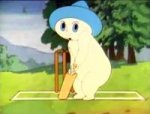
“Ghayab Aya” was the first animation series in India. A ten-episode series featuring a cute little character in a turban, fanning himself with a leaf teaching good manners and behavior to people. He seemed to me more like Casper the invisible ghost. In one such episode, he helps a girl win a car race in which the bad man or the bad character tries many illegal tricks to win the race but Ghayab helps her to win it finally.
Being the first animated cartoon it was an instant hit among the kids. Here too the title track was very catchy so the 80’s generation will surely remember this track..
It went like…
Pa pa pa pa pa pa…gaaaa…… ghayab aya ghayab aya idhar se aya udhar se aya, udhar se aya idhar se aya (2)
”Ghayab Aya…Ghayab Aya…Kisi ko hasane aya….kisi ko satane aya…satane aya… saatane aya… ghayab aya ghayab aya gai…pa pa pa pa pa pa pa” {2}
“Raju Aur Udantashtari” (1989)
One of the serials telecast in the afternoon sessions of DD. A faint remembrance of this serial where the spaceship lands on Raju’s terrace and he becomes friends with the aliens. All i remember is the title track like: Raju ar Udaantashtariiii …’swosh’ ‘swosh’
“Tenali Rama“(1990)
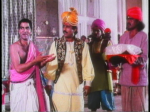
Garlapati Tenali Ramakrishna popularly known as Tenali Rama and Vikata Kavi, was a court-poet of Vijayanagara Empire in the 16th century. He was one of the Ashtadiggajas who were patrons of Krishnadevaraya & is also referred to as Tenali Rama in some parts of Southern India. He was known for wit and a large volume of poetry written in the Telugu Language. His story was made into a classic 12 episode TV series on DD. He is noted for brilliance and wit and for mocking other poets and great personalities. The stories of Tenali are very popular as Akbar-Birbal Stories, both the personalities are known for their intelligence. The same King, The same Darbaris 7 the same witty Tenali. The TV series still holds a clear picture of the audiences of 1980s. The sweet title track went like Balle Balle Balle bale bale bale bale Tennnali Ramaaaaaaa.
Illustrations: R K Laxman
Direction & Screenplay : TS Nagabharana
“Sinhasan Battisi” (1990)
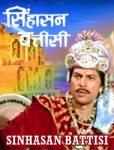
Raja Bhoj, a famous and brave king comes to know of a Sinhasan (throne) which is magical and mysterious. Moreover, whenever he tries to sit on the Sinhasan a statue from the Sinhasan emerges out and tells him tales of Veer Vikram Aditya the king of Ujjaini. This Sinhasan originally belongs to Raja Vikram Aditya who was a courageous and a very clever king. There are 32 statues guarding this throne which come to life one by one and give out interesting stories to prevent Raja Bhoj from sitting on the throne. Will Raja Bhoj be able to fulfill his desire to sit on the magnificent throne?
Producer: Vidya Sinha
Director: Chandrakant
Featuring: Dinesh Hingo, Jayshree Gadkar, Subhash Kapoor
“MungeriLal Ke Haseen Sapne” (1990)
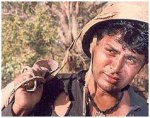
“Mungerilal ke Haseen Sapne” was about the doomed hopes of a typical middle class man(Mungerilal, played by Ragubir Yadav), who thinks very high.. but doesn’t have the wings to fly. He dreams of being the boss.. about dating his beautiful colleague and that his wife actually listening to him and valuing his words.. The dreams have been enacted in a very funny manner… but the best was always saved for the climax, when Mungerilal’s dream comes to an end… The acting on the part of the other cast was scintillating and no wonder you could hear people talking about it all day long.. It was a voice for the mellowed Indian middle class who was not very well represented anywhere… the ones who preferred to keep to themselves, but were always dissatisfied with life, and always dreaming to make it big… and slipping on the way.
Directed by: Prakash Jha
Cast : Raghubir Yadav … Mungeri lal.
“Udaan” (1990)
Udaan, a television serial based on the struggle of a woman aspiring to be an IPS officer. It was a story of a girl named “Kalyani Singh” who joined the police force and with her hard work and sheer determination went on to become an ‘ASP’. The story was also written by Kavita Choudhary who was inspired by her older sister Kanchan Choudhary who went on to be appointed as Director General of Police of Uttaranchal, becoming the first Indian woman to head a state police force. It was one the first serial to showcase “women empowerment”. The Title track was just a humming wherein the young girl releases a caged bird and is shown growing up as she runs through the fields.
Director : Kavita Choudhary
Main Lead: Vikram Gokhale, Kavita Choudhary and Shekhar Kapoor
“Ase Pahune Yeti”(1989)
‘Ase Pahune Yeti’ a Marathi serial, was a hilarious take on the uninvited guest problem in Mumbai, with Reema Lagoo and Vijay Chavan playing a hassled couple whose plans are constantly turned upside-down by a steady stream of uninvited ‘guests. And who can forget the terribly upset Baku Aatya.
Cast: Vijay Chavan, Mohan Joshi, Reema Lagoo, Smita Talvalkar, Maya Gurjar, Raja Mayekar
“Gul Gulshan Gulfam” (1990)
Gul Gulshan Gulfam, directed by Ved Rahi, It was shot in the summer capital of Jammu and Kashmir. Kunal Khemu, the little boy, was first seen in a fleeting role in that serial. Based on a family in Kashmir valley, I first saw boathouses in this serial. The locations were awesome. It was a bit slow though and I had lost interest after sometime. Other family members used to watch it though. I must admit that I never really understood this serial.
The Title track goes:
Muskrati subah ki aur gungunati sham ki
yeh kahani Gul ki hai Gulshan ki hai Gulfam ki
Director: Ved Rahi
Drama: Pareekshit Sahani
Cast: Pankaj Berry, Kunal Khemu, Mangal Dhillon.
Producer: Cinevista
“Chanakya“(1990)
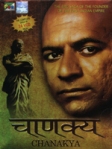
Dr Dwivedi made his first acting/direction TV venture with “Chanakya”. It came out in times when several other historical and mythological series were popular. . Though the tele-serial did not do well when telecast on Doordarshan , the amount of research that went into producing the serial, the historical accuracy, and the care taken in costume every aspect of production is remarkable.The background music is played only by instrument that were prevalent in 3rd century BC.Chanakya describes the exploits of a clever and farsighted Brahmin to unify all of India under one ruler and his gentle persuasion of Minister of current largest kingdom i.e. Magda named “mudrarakshas”.Second half of series is loosely based on this ancient Sanskrit text which details all political moves of Chanakya to win loyalty of people of Magda without much bloodshed. This is really strange that Indian records don’t mention invasion of Alexander and all information we have is from Greek sources.Similarly Chanakya the first patriot of India who succeeded and whose vision is relevant even today is not a person who is accorded his due honor and attention in history. The swords and shields used was a replica of those from the Mauryan times. The most commendable aspect being the setting itself. Dr.Chandraprakash Dwivedi spent over 1 crore (10 million) rupees back in those days, for reconstructing a replica village/city of the Mauryan times. Though the city is not 100% a replica of 3rd Century Pataliputra or Takshasila, it is remarkably planned and structured as per the definitions given in Chanakya’s book – the Arthashastra A must watch for all history students and also political science students and in today’s troubled times for all Indians. The Title track is a remarkable Sanskrit Shloka. Shantihi……….
Written/Directed/Played by -Dr.Chandraprakash Dwivedi (of Pinjar fame)
MD:- Ashit Desai
Singers:– Pradeep Vaidya, Hema Desai, Ashit Desai
“Qile Ka Rahasya” (1991)
A Scary serial with a stupid end. It was frightening and the haunting music was too good. Whenever we use to watch the serial ( Friday night’s), we use to cling to our mother while sleeping the scariest part is when a girl goes into the fort (Qila) and comes back after some time she has the stamp of blood hand on the back of her shirt. The woman in white used a number of times was scarier more here. I remember it very well It used to come after the Laxman Sylvania add featuring Asrani & Viju Khote (Saare Ghar ke Badal Dalunga).
This Serial surely made going to the toilet in the night the most fearful task back then. Simply Chilling!
The Title track goes:-“Yeh hai Shapit Quila…Sadiyon Purana…Isme bhool ke bhi mat janaa(then there is a shreak)
A girl falls to her death from top of the Haveli (It’s clear though that it’s a doll)
Cast: Virendra Saxena
Directed by: Seema Kapoor
“Stone Boy” (1991)
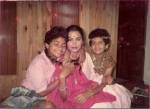
Ajit and his sister Archana have to shift to a new country as their father’s job gets transferred. They get admitted to a new school. Initially they find it difficult to befriend their new classmates and end up fighting with many. The schoolmates are not ready to accept the new classmates Ajit and Archana. Eventually they come to know about a mountain called Stone Boy. There is a legend about this mountain that long long ago there was a poor farmer/milkman boy. He was having very bad days because of his poverty. He owned a goat and selling that goat’s milk was his source of income. Every day he used to milk his goat and went selling milk. One day when he was returning home from his business, he saw an amazing scene. A group of very beautiful fairies had landed on earth and were enjoying dancing and singing. He saw their whole “Leela” or singing and dancing by hiding behind a large stone. Eventually a fairy happens to catch him having sneak-peak. The fairies get very angry upon him and curse him. But the poor boy pleads for forgiveness. One of the fairy feels pity on him, and asks him to make a promise. The fairy say’s “From now onwards, you will get prosperous. All your problems will get solved. All hurdles in your life shall get removed. But only while you keep this secret that we fairies visit this place on earth. You shall have to keep this secret. If you ever tell this to anyone, all your prosperity will be lost and you will get transformed into a stone on that high mountain. You can only appear on being called as a normal human being once in fifty years, for just three days. Remember you can appear back as a normal human being only when someone climbs to that mountain, and calls you from the depth of his heart. After three days of your coming back to humans you shall again be transformed into stone for another fifty years waiting for someone to call you. This would be your punishment for not keeping our secret.” Saying this the fairies disappear. Eventually, what fairies said starts becoming true. The boy starts getting more profit from business. He starts getting richer. But jealous villagers can’t stand his progress. One day they force him to tell the secret of prosperity. The boy cannot keep silent when whole village is forcing him to tell the secret. So, he starts telling them the secret. No sooner than he utters the secret his body is transformed into a stone of arbitrary shape and shifted to the peak of mountain. That mountain is called as the Stone Boy since then. When Ajit and Archana hear this legend, they think of giving a try to call back Stone Boy. They climb up that mountain and call him to come back. But Stone Boy does not appear. Again they start living their normal life. With the problems of not having anymore new friends in the new country. Ajit and Archana think of giving a one more try to call back Stone Boy. This time they keep in mind the fact that they need to call him from the depth of their hearts. They succeed. The stone boy comes back to life. Stone boy helps Ajit and Archana to make new friends. Stone boy also wishes to enjoy his long awaited three days life. So the threesome enjoy for three days. After three days, Stone Boy has to go back to his stone form. And the story ends with a very emotional scene of Stone boy getting transformed back into stone.. In our heart and mind, Stone Boy lives on. Telecast on those lazy Sunday mornings.
Cast: Stone Boy- Master Ankur, Ajit-Master Manjunath
Directed by : T.S. Nagabharana
Produced By: T.S. Narasimhan
“Phatichar” (1991)

Phatichar was a TV show broadcast, in India on Doordarshan in 1991 starring “Pankaj Kapur” in the title role. Phatichar a fictional character which comes to life from the novel of a writer. The character lives in a cement pipe and the show portrays, in a bitter-sweet manner, the life and it’s disadvantages of living on the margins. A jolly character who used to self-consult himself with the line: “Arre yaar phatichar, tu itna emotional kyun hain?”
Writer & Director: Anil Chaudhary
Music: Sharang Dev
Producer: Indu Prakash
Video Vision Corporation
“Mrignayanee” (1991)
Mrignayanee is a Hindi term meaning “doe-eyed,”
It is about a king Mansingh & his love for a tribal (mrignayani gujjari) girl. Amol Palekar tried to sketch the character that had been in the period of 15th century. Actor Mohan Bhandari played the role of Mansingh (A Rajput king) & actress Pallavi Joshi played the role of a tribal girl.
It was a challenging role for Pallavi who was a new face on television to perform the role, Pallavi played the title role with much conviction. The two set the screen on fire with their on-screen chemistry! Pallavi Joshi had also worked with Shyam Benegal in “Bharat Ek Khoj” before this.
Cast:– Pallavi Joshi & Mohan Bhandari
Director:– Amol Palekar
“Dada Dadi Ki Kahaaniyaan“(1991)
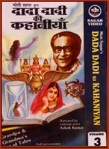
Hemant Kumar sings the theme song: “Dada dadi ki kahaaniyaan, sadiyon yaad rahe. Bhoola nahin koi, bachpan mein suni…” Dada (Ashok Kumar) and Dadi (Lila Mishra) entertain their grandchildren
(well, I think they might just have been the kids in the neighborhood) with Indian folk tales. There was a lot of overlap between the stories on this show and the show it immediately preceded, Vikram Aur Vetal.
I remember that this was on Sunday afternoons.
Cast: Ashok Kumar & Lila Mishra.
“Turning Point” (1991)

On Saturday afternoons, the Universal Grants Commission (UGC) would air very informative documentaries on various topics of science and education. And perhaps the finest science show that was ever aired on Doordarshan remains the always
enjoyable “Turning point”. I would wait with eager anticipation every week for Girish Karnad and Prof Yashpal to show up and host that show, and watched with rapt attention as the great discoveries of science were unveiled and explained. All those years ago, Prof. Yashpal seemed like the most astounding mind on the planet. He seemed to know everything, and science as a career option almost seemed irresistible.I means, imagine being a fountain of knowledge talking science on TV! The best part though was the QA session at the end involving the prof’s replies to some amateur questions from youngsters all over India.It was the longest running science serial which fetched the Doordarshan several international awards. Indian programmes have found an innovative way of involving a renowned film personality with intellectual appeal as an anchor person and hope the programme finds some identity.Most of the science programmes originating from India however need to concentrate more on visual pattern and evolve a grammar conducive with the demand for understanding and level of the Indian populace. The key lies in continuance of ‘Turning Point’.
Credits for this Programme:
Chief Producers: Ms. Naazish Husaini(Doordarshan) Indraneel Kaul( Arun Kaul Productions)
Camera: Neelaabh Kaul, S. Shankar, Chandra Shekhar
Presenter: Girish Karnad, Naseeruddin Shah, Mallika Sarabhai, Mahesh Bhatt.
Advisor: Eminent physicist Prof Yashpal, Title Music: Loy Mendonsa
Scripted & Directed by: Indraneel Kaul, Neelaabh Kaul
“NDR,WDR, ZDF & Deutsche Welle Transtel Programmes” (1991)
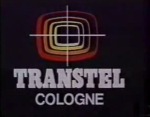
Deutsche Welle (DW) is Germany’s international broadcasting service. Deutsche Welle, meaning Voice of Germany was set up in 1953, in the aftermath of World War II, and It claims to have one of Europe’s most modern broadcasting centers in Bonn. Its numerous radio and tv programmes are produced by an editing staff from all over the world, allowing DW to build bridges of information, culture and dialogue. Additionally, DW specializes in the production of documentaries and has established itself as a programme provider with a reputation for quality throughout the world over the years. DW has integrated DW-TRANSTEL into its offering. The former distribution company traditionally supplied overseas television stations with dubbed, multilingual German television programmes worldwide since 1965. Programmes were taken from the two German public service TV networks ARD and ZDF, edited and adapted to meet target audience requirements in Africa, Asia, Latin America, the Middle East, the Caribbean and also in Eastern Europe. DW continues its work and keeps the DW-TRANSTEL brand to offer adapted programmes. Broadcasters have the possibility to select from a wide range of programmes covering documentaries, family entertainment, children’s programmes, sports, music, and fiction. TransTel stands for the German Television Transcription Corporation.
Doordarshan was smart enough to add some of these best programmes for its audience in the 90’s. For the children it was Telematch , it had teams from different German villages, and all contestants would wear very innovative costumes. They had strange games like throwing pie, dunking in water, riding wooden horses etc. The games would have this Games master who would recite Ein, Zwei, Drei (one, two, three in German) and then blow a sharp whistle. All games were timed with an early digital clock on the right hand corner of the screen. I also remember watching a programme on “Railroad Adventures” with the worlds most senic train journeys with five-star comfort and adventure all in one. A Train Journey in Darjeeling in a narrow gauge steam train was bewitching. The other one through Siberia giving a glimpse of the people (a women) who work on the train route & living in the far cast villages and the life of these people, how well balanced it was, dependent on the train for their link with the outside world & their monthly needs fulfilled by a single visit to the town. I saw most of the natural history programmes on this well before NGC & Discovery. The “Know How Show” in particular was a great show on the latest inventions in Science & technology, explaining the Physics & Chemistry of different phenomenon around us with awesome practical examples. There was a dedicated band of musicians & a rather old audience to applaud the host.
Produced by DW-Transtel, Cologne, Germany.
“Kya Banoge Munna” (1991)
It was during the sleepy afternoons of the late eighties when Doordarshan had started the afternoon transmissions for the first time in India. “Kya Banoge Munna” was one such serial which was quite ahead of its times. It was about a small kid and the pressures on him at a very young age to achieve what his parents wanted him to become in life. Its title track was so catchy that I still remember it…
Title Song went like…
“Kya Banoge Munna…
mummy kehti bano doctor…papa kehte afsar…
engineer banjaoo bhaiyya..behna kehti aksar…
bacche ke khel-kood mein bolo bache ka kay hissa…
iss sawal ke hi jawab mein kar de shuru yeh kissa…
kya banoge…munna.”
Chauraha (1991)

This serial of 40 episodes was produced by Mrs. Shahana Khan and was conceived and directed by Suhel Farooq Khan. This exercise was done in 1991 for the Directorate of Adult Education of the government of India.
The serial taught how to read and write Hindi in a fun way rather than a boring monotonous method. The program usually taught people through narratives and activities. They gave examples that made it easy for people to understand. For instance, comparison of letters was done with the shape of things that we usually find around us, as in a tap, chair, spoon, etc.
No other TV-based learning module has ever been produced before and tested this thoroughly was ever found to be this effective. Its audience absorbed the lessons imparted through video in totality.
Large puppets like Panditji-dhaba owner, Rahim Khan- Postman and Tarseem Singh- truck driver were introduced to interact with live characters and delivered messages of harmony, environmental conservation and cultural variety in India. There was an animated pencil with eyes which use to appear on the screen with a swishing noise and write alphabets in hindi for the audience
“Tehkikat” (1992)
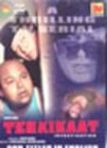
Tehkikaat is a detective serial with thrills and chills to keep the viewers to the edge of their seats. Pair of investigators SAM AND GOPI undertake, perplexing and dangerous, cases which lead them into often hair raising adventures. The cases they investigate vary in the range – A beautiful lady murdered and a popular playboy is the main suspect but then he too is killed !!! A housewife is trapped in a hotel, a stranger tries to rescue her but is killed and his body disappears !!! An actress is found dead underneath a building, did she jump or was she pushed? A serial with loads of suspense.
“Jab-jab is duniya mein jurm hota hai, katl hota hai, khoon hota hai.
jo din ke ujaalon mein chalta hai, raat ke andheron mein badhta hai – tab
shuru hoti hai Tehkikaat” Hum Yahan Tehkikaat karne aaye hain. Sirens…..
Starring :- Late Vijay Anand ( SAM D’silva) , Saurab Shukla (GOPI) ,
Ashok Kumar, Kittu Gidwani and others.
Director:– Karan Razdan and Shekhar Kapoor
“Neem Ka Ped” (1992)

For those who want to see a stellar performance by Pankaj Kapoor, and do have some familiarity with Awadhi and Urdu, a fantastic television serial. It’s a story of a semi-bonded laborer, Budhai Ram – played(rather, lived) by Pankaj Kapoor, under a Muslim village zamindar. This Muslim landlord is under property dispute with his minister brother-in-law. As circumstances turn out to be, Budhai Ram gets caught between this fight of pride and property. The bone of contention is also the small piece of land on which he has planted a Neem tree as a kid.His only hopes are his son Sukhai whom he wants to educate and that Neem tree with which he identifies himself, and his beliefs. How a powerless, but determined peasant gets out from this wrangle, saves his Neem Ka Ped against all odds, gets his son educated and turns the tables on his warring landlords. Pankaj Kapoor aka Budhai Ram got so well under the skin of the character. He is only Budhai Ram for the viewer for that half an hour. The way he smiles -sheepishly, sarcastically, helplessly, all are different shades of emotion. The way he trudges to work, his steely resolve which he hides successfully, only to be let out only once in a while, his body language – everything about him force you to take a bow for him. Pronunciations are perfect. By perfect I mean that the words are spoken incorrectly the actually way a typical illiterate villager mispronounces. This mispronunciation has been perfectly incorporated in the script and very beautifully carried off by the artists.
The title song was by the Ghazal King “Jagjit Singh”. Hearing this Ghazal made me fall for ghazals and since then I have been listening to his ghazals. Simply mesmerizing!!!
Munh ki baat sune har koi, dil ke dard ko jaane kaun
Awaazon ke baazaaron men khaamoshi pahachaane kaun
Sadiyon sadiyon wahi tamaasha
Rasta rasta lnbi khoz
Lekin jab ham mil jaate hain
Kho jaata hai jaane kaun
Wo mera aina hai ya main usaki parachhaai hun
Mere hi ghar men rahata hai mujh jaisa hi jaane kaun
Kiran kiran alasaata suraj
Palak palak khulati ninde
Dhime dhime bikhar raha hai
Jarra jarra jaane kaun
“Kirdaar” (1993)

Gulzar’s debut on prime-time. The serial has a collection of stories by Urdu, Hindi and Bengali writers, including Ahmed Nadeem Qasim, a celebrated Urdu writer from Pakistan, Malti Joshi in Hindi, and Samresh Basu in Bengali. Gulzar had cherry-picked the best acting talent like Irfan Khan, S M Zaheer, Sulbha Arya, Pavan Malhotra, Sameer Khakhar, Mita Vasisht, Kamini Kaushal, Nadira, Anant Mahadevan, Surekha Sikri and the versatile master of parallel cinema: Om Puri
The serial ran for two Years laying the foundation for literary classics like Tehreer… Munshi Premchand Ki and Mirza Ghalib by the same mastermind.
The serial depicts simple living but a very thoughtful generation of people that are rarely seen around in this age. The one thing that made me recall this serial was Om Puri and the ethereal voice of Jagjit Sigh in the superb title track that was cornered as a faint memory a proof that music as a sense transcends time…
The Title track goes:
“Kitabon se kabhie guzro to yoon kirdaar milte hain
Gaye waqton ki dyodhi par khade kuch yaar milte hain
Jise hum dil ka veerana samajhkar chod aaye the
Wahin ujde huye shahron ke kuch aasar milte hain”
Director: Gulzar
Cast: Om Puri and others
“Living on the Edge” (1993)

India’s first environmental series, “Living on the Edge” relentlessly focused on environmental issues scrutinizing the exploitative relationship of man with his surroundings. A groundbreaking series on strategies for a sustainable healthy environment. Finding problems and suggesting least disruptive solutions make the program unique and there lay the secret of its broad appeal and continuing success. Each week, Living on the Edge critically looked upon the state of India’s environment – from the effects of urban pollution to the drinking water crisis. With hidden camera shots, setting up police raids and exposing fraud, the series breaks new ground in television journalism. It was a path-breaking and longest running investigative environmental series. Meant to be a 13-part series, but which acquired a life of its own and ran on for a mammoth 250 episodes and went on to bag several awards, including the Green Oscar, and got picked up by Star Plus for retelecast in 1997.
Producer: Nikhil and Niret Alva
Presented by : Miditech
“Surabhi” (1993)
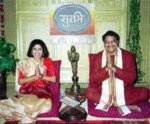
Surabhi means Fragrance. It was Amul Surabhi…along with the 1000 Watt smile of Renuka Shahne(Rana) & the deep voiced (similer to Ameen Sayani) Siddharth Kak as the hosts. This was more than just a simple cultural program. The serial attempted to show us the diversity across the length and breadth of this country; the camera of surabhi discovered something new in every episode. Surabhi travelled all over the country, covering fascinating facets of Indian culture, in the widest sense of the word it was truly an view of the cultural fragrance spread across India .It ran for a total of approx 415 episodes making this one of the most long running programmes on DD.The life and living of the various peoples of India was brought to you with all its rich plurality by the various Team Directors. The martial art form of Kerala called ‘KALARIPAYATTU’, was never heard of before this. There was a superb interaction, with audiences being asked a question at the end of an episode, wid the “Sawal Jawab” and the involvement grew and grew till they had to handle a huge number of postcards (I believe that they had a record of 10 lakh postcards for one episode)… But Surabhi not only gave a record or report but insight and understanding of India in evolution, mirroring the changes of an ancient culture metamorphosing into a modern nation.The Sawal Jawab was the section we would all be waiting for( with the hints) & also to see if our letter would be the lucky one from the lot. The lucky winners would get “Taj ke saujanya se do vyaktyon ke liye do din aur do raton ka muft safar” which was a bigger gift than winning lakhs ( the basis of most of today’s worthless TRP hungry shows)
Amul Surabhi Sawal Jawab
Cinema Vision India
Post Box No: 11901
Azad Nagar (Andheri West)
Mumbai 400053
email: surabhi@amulindia.com
Created by : Siddharth Kak
Directed by : Abhilash Bhattacharya
Presented by : Siddharth Kak & Renuka Shahane
Theme Music Composer : Dr. L. Subramaniam
Producer : Siddharth Kak
Production Company : Cinema Vision India
“Byomkesh Bakshi” (1993)
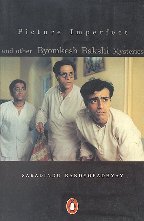
Byomkesh Bakshi is a fictional detective in Bengali literature created by Sharadindu Bandyopadhyay in 1932 way before Satyajit Ray’s Feluda. Byomkesh Bakshi on Doordarshan was played by Rajit Kapoor as the Bengali detective, our very own desi version of Sherlock Holmes. Set in the old-world Calcutta of the Raj, these stories featured the astute investigator and his chronicler friend Ajit. In Byomkesh’s world, peopled with wonderfully delineated characters and framed by a brilliantly captured pre-Independence urban milieu, it’s fascinating because of its contemporary flavor. In the first story, Byomkesh works undercover to expose an organized crime ring trafficking in drugs. In ‘The Gramophone Pin Mystery’, he must put his razor-sharp intellect to good use to unearth the pattern behind a series of bizarre roadside murders. In ‘Calamity Strikes’, the ace detective is called upon to investigate the strange and sudden death of a girl in a neighbour’s kitchen. In the next story, he has to lock horns with an old enemy who has vowed to kill him with an innocuous but deadly weapon. And in ‘Picture Imperfect’, Byomkesh unravels a complex mystery involving a stolen group photograph, an amorous couple, and an apparently unnecessary murder. In “Simonto Heera” Byomkesh outsmarts the intelligent Sir Digindra ( played by Utpal Dutt) to get back the precious stone hidden inside a small POP sculpt of Natraja. In another murder mystery “Wasihat” an old man (chunnilal) is killed by a needle piercing in between the medulla oblongata and the first virtebra, which results in instant death. The reason for the killing is well the old Jaidad Hadapna. 3 suspects and a oversmart police officer who thinks he knows the killer even before Byomkesh arrives. Again the killer is an unsuspecious disabled chap. This episode was a special one for Byomkesh as he finds his lady love Satyabati ( Sukanya Kulkarni).
Dressed in a Kurta and a Safed Dhoti which looked apt on his slim figure, along with well oiled & groomed hair Byomkesh looked liked someone from the 1920’s. His friend Ajit Babu who was supposed to be a story writer would accompany Byomkesh in all his cases and would demand an explanation for every move that he would make in order to solve the intricate cases. At the end, Rajat Kapoor would say in his typical ‘You fool’accent …Aare itna bhi nahi samjhe…and would explain how he cracked the case. Byomkesh Bakshi came at a time when the satellite channels had just started filling the satellite slots with dumb serials and that time Doordarshan still had some decent shows on air and this one was the best of the lot. It had everything -humour, action, brain teasers and most importantly a script (which is missing in almost all of the TRP hungry shows these days). It typically portrayed Byomkesh & his friend almost always in the same room discussing the case they were hoping to solve. They were always portrayed sipping on a cup of tea during their discussion, served by Sukanya Kulkarni (Byomkesh’s wife- her role was to serve tea only) or by their servant. I always used to think that there was nothing in those cups which they skillfully brought to their lips making the sipping sound. It was a low budget production by Basu Chatterjee but it was indeed the best detective serial on Indian Television till date. Reruns on DD Bharathi. A must Watch!
Cast: Rajit Kapoor (As Byomkesh Bakshi); K.K Raina (As Ajit Kumar Banerjee), Sukanya Kulkarni (As Satyabati)
Story: Saradindu Bandhopadhyay
Director: Basu Chatterjee.
“Afsaane” (1993)
There are certain moments from any form of art that keeps haunting you all your life. It could well be a song, a painting, a movie, an advertisement or a real-life incident. Afsane was one such serial that was etched in my mind for decades. It was a story of a young boy Raghu, whose uncle is a postman who passes away giving all his ancestral property to Raghu. He soon discovers a stash of undelivered letters, some 20 years old. Initially, Raghu decides to get rid of them but soon realizes that it’s his duty to deliver the letters so as to honor the memory of his uncle.
This starts a saga of events in the life of the individuals who receive these letters and each episode finely portrays their life-changing experiences. One such episode involved an old couple in Delhi who receive the news through a 20 years old letter that their daughter who was long lost in a fair is safe and in Baramulla, in J&K. The old couple is penniless, but the fervor of seeing their daughter who now must be a grown adult drives them to collect enough money for the journey from their community, through hard labor and by collateralization of their hut.
The entire journey is heart-wrenching as the couple faces a mountain of challenges. On meeting the foster parents they are told that their daughter is married off to an NRI two days back and the couple is now flying to London the next day from Delhi. With the last hope of seeing their daughter’s face the old couple get along in a taxi to the airport.
A generous staff tries their best to fulfill the old couple’s desire to meet their daughter. However, she is checked in and seated in the immigration lodge.
The couple’s emotions are overwhelming. Eventually, they bid farewell to their plane from the runway. Alas, the old couple tatters the old letter and walks off.
Directed by: Lalit Behl
Written by : Navnindra Behl
Address for feedback: “AFSANE” Post Box-78. New Delhi
Produced By: Media Minds
“Rangoli” (1993)
It was amongst the first lot of shows that brought all the hit songs from Bollywood and private albums for the Indian audience. It was like an alarm at 7 am on Sunday mornings. We would be up in front of the TV brushing teeth or having the chai. It was not about which song is rated number one, but similar to chitrahaar it showed all the hits from the box office and private albums which was a new platform for virtually unknown singers to get exposure to the music industry. This perticular show was running for a long time with famous personalities like Hema Malini making an appearence to host it from time to time. As the satellite channels starting holding grounds on the Indian telivision, Rangoli started fading into history.
“Dekh Bhai Dekh” (1993)
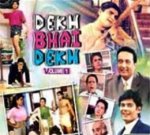
It is a classic! It was first aired on Doordarshan in the year 1993 . It is a sitcom revolving around the Diwan family, who live as an extended family in an ancestral bungalow in the suburbs of Mumbai. The family consists of 11 members, aged from 6 years to 65 years, including a father, mother, two sons, and their families. The serial takes the viewer through the various ups and downs faced by the family and through crazy and unexpected things which happen to them with unfailing regularity. Their never-say-die attitude helps them overcome sibling rivalry, boyfriend troubles, business problems, in-law problems, etc. A distinctive feature of this show was its fast speaking characters. It was a comeback for Shekhar Suman after a failed attempt in Bollywood. Later he went on to do serials like Reporter and Movers & Shakers (A Jay Leno’s Tonight Show copy) on Zee. “Dekh Bhai Dekh” was wittily written by Lilliput and well crafted by Anand Mahendroo, produced by Jaya Bachchan and a lot of filmi personalities like Farida Jalal, Navin Nischol, Shekhar Suman, Deven Bhojani etc. acted in this sitcom. The other characters were Chachi, Kareema, Sanju,Keerthi, Shilpa…The acting by all characters was just perfect and none of them overacted. I also remember Sameer ie: Shekhar Suman always used to miss some steps and nearly fall while coming down the stairs, Deven Bhojani as Kareema (tu Bandar hai!!!)… the not so Servant type character always with a broomstick in his hands and then Remember the line by Liliput “Dekh Bhai dekh Sameer bhai”.
Hilarious and entertaining. The catchy Title song was sung by Udit Narayan.
Its Title Song goes:-
Is rang badalti duniya mein Kya tera hain kya mera hain Dekh Bhai Dekh…
Dekh Bhai Dekh! Har shaam ke baad savera hai…Dekh Bhai Dekh oi Dekh Bhai Dekh
Kadam Kadam par Gana Hai, Hasna hai, Rona Hai, Jeena hai , Mar jana hai, Jani Kuch kar Jana hai.
Har Lamha Bahetereen, Dekh Bhai Dekh…. ha Dekh Bhai Dekh, Zamana hai Rangeen
Dekh Bhai Dekh oi Dekh Bhai Dekh.
Directed by: Anand Mahendroo
Produced by: ABCL-Jaya Bachchan
Cast: Shekhar Suman, Naveen Nishchol, Fareeda Jalaal, Bhavna Balsavar, Deven Bhojani, Shushma Seth, Daisy Irani, Vishal Singh, Natasha Singh, Urvashi Dholakia & Amar Upadhayay (Immortal soul of Kyunki Saas…)
“Potli Baba Ki” (1994)
Puppet show of stories including Allauddin & AliBaba & 40 Thieves. A collection of short stories for kids, most of them inspired by The Arabian Nights. The title sequence featured the Old Baba carrying the Potli. The old story-teller, Chenuki Jhunnu ka Baba, living in Ghungar village, collect stories and fables which his mother has left hidden under rocks. Puppet shows might seem like a thing of the past for today’s Gennext but we throughly enjoyed this one . The puppets were the concept of the puppet master Sanjit Ghosh & the title track was composed by the kiddy songs mestro Gulzar.
Aaya re baba aaya re.
Ghunger wali Jhenu wali jhunnu ka baba
Kisson ka kahaniyon ka geeton ka Jhaba
Ghunger wali Jhenu wali jhunnu ka baba
Kisson ka kahaniyon ka geeton ka Jhaba
Hey aya aya jhenu wali jhunnu ka baba.
aya aya jhenu wali jhunnu ka baba. Aaya re baba aaya ….
Potli me hari bhari pariyon ke parr, Mandiron ki ghantiyan, kalisaaon ka bagh (2).
Hey aya aya jhenu wali jhunnu ka baba.
aya aya jhenu wali jhunnu ka baba.
Aaya re baba aaya re….
Director/Script : Sanjit Ghosh/Gulzar
Camera : Soumendu Roy
Editor : Subhash Sehgal
Music : Kalyan Sen Barat
“BalChitravani” (1994)
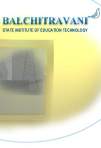
Balchitravani (SIET) is an Institute in Maharashtra that is working mainly for primary education through the electronic mass medium with computerized educational programmes. Balchitravani was set up in Mumbai in 1984 before it was shifted to Pune in 1986. It has emerged as a landmark in children education through audio and video programmes (countrywide classrooms). Since its inception the Institute has been actively involved in the enrichment of the learning-teaching process in the classrooms.Usually Primary & Pre-primary level programmes based on a wide varity of topics ranging from Mathematics, Languages to Value Education were telicast. These programmes were aimed at bridging the gap between rural and urban children. The government in the schools of rural areas in Maharashtra had also provided color TV sets to watch these programmes. I faintly remember watching these on weekday mornings in the May holidays. These programmes recently received several National awards in Pune.
The Title Track :
Mula-mulanchi, Maje-majechi… BaalChitrawani.
Phule paakhre anandane….Anandaneee,
Phule paakhre anandane gati gammat gani,
Baalchitrawani hi Baalchitrawani.
“Amaravathi Ki Kathayein” (1994)

A Television Series based on Sahitya Academy award-winning stories, Directed by Shyam Benegal. It was 13 parts Sponsored serial aired on Mondays 9.30p.m. The Little Fish: The serial revolves around the life of a 70-year-old orthodox Brahmin woman, Subbammagaru. She feels it is a must for her to bathe in the river Krishna and take a pot of water from the river for household purposes. Her husband, Satyanarayana, teases her for her rigid principles. And he also gets a chance to teach her what real purity is.
Title Track:
Krishna Tat par Amrawati nagar jahan bam bam bam bhola amar lingeshwar….Jhimir Jhimir nadi bahe katha kahe re…bina bole hasi, khushi, watha kahe re…Khatte mithe rang chune bunde jeevan ki…meh meh mehke Amaravathi Ki Kathayein!!
Director: Shyam Benegal
Writer: Satyam Sankaramanchi
Title Track: K Shailendra
Music: Ashok Patki
Samandar (1995)

Samandar was an Indian television show that was telecasted on the DD in the year 1995. The show was created by retired wing commander Anoop Singh Bedi.
It highlighted the struggles that navy officers face when having to fight. It also showed the bright side and the camaraderie that these Navy officers have for each other. It had a combination of both positive and negative things in the lives of Naval Officers. The television show was distinct as there would be appearances of real Indian Navy Officers from time to time.
It’s the title track :
“Samandar Ki Haseen Lehron Ke Kamil Hukmaraan Hain Hum’ was written by Sultan Malik who also ended up singing this song. The opening lines ‘SHA NAU VARUNA: Bless Us O! Water God’ touched millions of viewers across the country.
Director: Pavan Kaul
Main Cast:
Sameer Soni ,Vineeta Malik, and Aman Verma, and Girish Malik.
“Alif Laila” (1995)
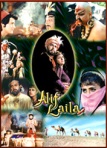
Alif Laila was a TV series based on the stories from The Arabian Nights with great morals, laced with flying carpets, magic lamps, and amazing fairies. It was produced by Sagar Films (Pvt. Ltd.). Consisting of 1001 stories such as Aladdin and his magic lamp, Alibaba and 40 thieves, Sinbad and his sailing saga etc. A long time ago, according to legend, there lived a king named Shahriyar. Partly due to his unfaithful wife and a strange character of his own, he started to hate women. He used to marry a woman each night and kill her the following morning. Then came a cunning lady named Shahrazad to marry the king. She beguiles the king with a series of stories. These stories continued for a thousand and one nights.
Thus, is the origin of all fabulous stories of 1001 Arabian nights. It has lived through centuries, broken all political barriers and appealed to the old and young alike. I remember the flawless urdu used by the characters &the hair plucking Pirate from Sindabad the Sailor, also The Shemsher-E-Sulemani, The Green Colored Genie from “The Fisherman & the Genie”. The Mythelogical Guru Ramanand Sagar created awesome sets with mysterious background music which reminded of the Ramayan (1987). The Demons, Genies & creatures were straight from the comic books. It was Telicast at 9:30 p.m & would last hardly for 20 min with ads intrrupting at crucial moments. The Episodes were dragged too far with unnecessary stills & re-shoots to depict intensity. But still, it was fun in those days as there was so little choice of quality shows.
The Title Song:
Alif Lailaaaaaaaaaaa oooooohhhh, Alif Laila, Alif Laila Oooooo (2)
Arshab Nayi Kahani, Dilshap hai Bayani,
Sadiyan Gujar Gayi hai, Lekin na ho Purani
Pariyon ko Jeet Diliye, Jindo ko bhi Haraye,
Insaan main wo Taakat, Sab pe kare Hukumat’
Alif Lailaaaaa oooooo
Screenplay: Ramanand Sagar
Music & Lyrics: Ravindra Jain
Produced by: Subhash Sagar
Directed By: Anand, Prem & Moti Sagar.
Aarohan (1996)

The show was written and produced by Pallavi Joshi, who also played the character of protagonist Nikita.
It followed their lives and their training in the Naval Academy.
The show’s lead is a headstrong, passionate defense forces girl, Nikita. Her father (Satyen Kappu) and brother (Amit Behl) are in the Indian Army. She has a shy friend Shaifali Chhaya who joins the academy with her. R Madhavan has a cameo role as a naval officer.
The 13 episode series shows how Nikita overcomes all the difficulties which come in her way during her training in the Naval Academy and comes out with flying colors.
Produced By: Pallavi Joshi
Directed By: Nandu Ghanekar
“Meri Awaz Suno” (1996)
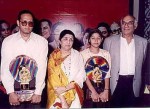
The first Reality Talent hunt show on Indian Television. What a discovery it was, super talented , youthful & simple Sunidhi Chauhan won the much hyped up mega final of this event in 1996. She was just 13. Her talent was discovered by her dad, and on the suggestion of TV hostess Tabassum Govil, she landed in Mumbai from Delhi. The much Dramatic Annu Kapur was the host of this serial & he’s never stopped hosting since then. It was announced well in advance that the Melody Queen Lata Mangeshkar would herself hand over the much coveted Lata Mangeshkar Trophy. Every music lover was eager to catch a glimpse of the voice that was in the AIR for almost 50-60 years & still going on. The final episode is well etched in the minds of those who were fortunate to catch a glimpse of the Legends of Indian Music, all on one stage. I remember that Bharatratna Lata Mangeshkar, Manna Dey, Pandit Jasraj, Bhupen Hazarika & Yash Chopra were present when a male singer & female singer was announced as the final winners. The Spectacled Keralite guy was Pradip Somasundaran & the female was young Sunidhi. Some Mr Ramdiklal Jeweller from Mumbai handed out cheques of a Lakh rupees to the winners. I was simply thrilled to see & hear Lata Mangeshkar for the first time in my life. The title song was sung by Lata Mangeshkar & composed by Pandit Hridaynath Mangeshkar.
Host: Annu Kapur
It was around this time-1996, that DD started deteriorating, rather failing to match up with satellite TV channels like Zee, Star, Sony etc. The world of satellite television was targetted towards the young audience..the Next Gen. But all the glorious years of Doordarshan have been wondrous. It is hard for those who have seen these unmatched Quality programmes on DD to adjust to the clutter of satellite channels today. Certainly “Those Were The Best Days Of My Life”.
Yet to Add:
- babaji ka bioscope
- Prathiba ani Pratima
- Aamchi maati amchi manse
- Sahyadri chya paulkhuna
- Gajara
- Shwetambara
- Doorche diwe
- Bolachi kadhi
- Ye duniya gazab ki
- Thoda Sa Aasmaan
- Aapna Aapna Aasmaan
- Farmaan
- Mahanagar
- Aisa Bhi Hota Hai
- Ek Kahani
- Guinea Pig
